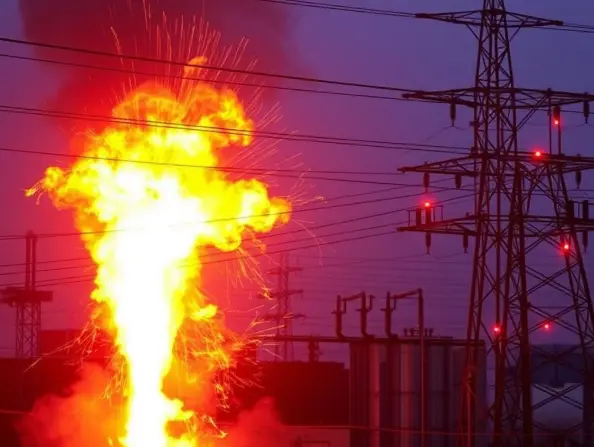
Electrical hazards and incidents are at the topmost priority as safety is concerned for the industry environment. Because it could lead to huge losses to property, severe injuries, or fatal accidents.
As per Electrical Safety Foundation International (ESFI) statistics, there were 166fatal accidents due to electrical hazards in 2019, which was a 3.75% increase over 2018.
To avoid these risks, proper assessment of electric installations at regular intervals is required in every corporate, organization, and company big or small.
Care Labs is providing electrical installation study, analysis, testing, calibration, inspection, and certification services offering professional electrical safety audit services.
Though electrical hazards can be identified and assessed in general safety checks, complete electrical safety audits can provide a thorough review of the electrical installations. The safety audits identify potential hazards, faults in the electrical system.
Safety audits are performed for regular checks to ensure that acceptable levels of risks are met and to identify new or possible risks which are then controlled by risk assessment methods.
Electrical safety audit & its benefits:
Electrical Safety Audit (ESA) is an effective approach to evaluate the potential hazards and to give recommendations for improvement. Safety audits are important to effective safety management, as they are responsible for safety planning, analysis, and correction when needed.
The scope of Electrical audit is wide which includes statutory compliance verification concerning OSHA, NEC, NFPA70E & 70B, physical inspection to be done for electrical hazards such as shocks, burns, fire explosion, injuries and to study suggest solutions for electrical safety.
Benefits:
A well-conducted electrical safety audit provides benefits as follows:
- Identifying and eliminating the safety hazards to reduce the risk of accidents
- Developing a dynamic record of safety performance
- Creation of positive cycle of safety improvement
- Improves management awareness of problems
- Identifying areas of risk or vulnerability in electrical systems and installations,
- Ensuring compliance with federal, and industry safety work practices
- Prevents electrical accidents
- A properly conducted safety audit can help to identify and correct control measure deficiencies that can improve workplace safety and help reduce liability.
- Audits can increase employee awareness and understanding of environmental, health, and safety regulations,
Electrical safety audit checklist:
One of the best ways for industries to maintain an electrical hazard-free work environment is via electrical safety audit checklists. These safety audit checklists enable industries to verify that they have all of their electrical safety measures covered.
The electrical safety checklists are helpful for safety auditors to keep track of the numerous aspects of an electrical installation that must be checked, verified, reviewed, determined in compliance with OSHA, NEC.
Safety audit checklists are an essential process to assess your employees and workplace conditions follow electrical safety measures. Electrical installations should undergo quality and safety checks before their operation. Inadequate safety checks and poor safety training could lead to electrical burns, severe injuries, and even fatalities.
This electrical safety audit checklist format helps a facility’s safety audits easier to conduct and maintain. The checklist format comes with a proven framework that can be edited and modified as much as you like, then the safety checklist can be accessed and completed.
Our auditors follow a professional approach to evaluate potential electrical hazards, maintain checklists of various aspects to be an audit, and produce final reports recommending actions for improved safety in electrical installations.
The checklist can be customized for further electrical safety or develop an audit protocol for hazardous installations.
Some of the check items on the electrical safety audit checklist include:
Grounding and bonding of equipment:
- Any equipment that has been left plugged in should be inspected to make sure that they are grounded.
- To check the type of grounding electrodes used.
- To check the size of grounding electrodes and their maintenance condition.
- To check the proper connections and grounding methods for the installations.
Wiring methods:
- To check the wiring methods and their suitability
- To check if all conductors of a circuit are bundled together
- To check the condition of the insulation and insulation standards
Extension cords suitability and safe condition:
- Extension cords should be used up to limit the range or else it will damage their insulation.
- So, check for the usage of extension cords of appropriate size and type for their intended purpose.
Inspect all the switches and outlets:
- Check for faceplate is present in all power switches and outlets
- To check no loose wires are accessible without removing the faceplate.
Personal protective kit:
- Availability of PPE kit
- Signs to notify the employers about PPE
If you run a business, you are responsible for the safety of your employees and facility installations. To avoid costly fines for safety regulation violations, you need a safety audit checklist.
The overall safety of your work environment can directly impact the productivity of your business.
To enquire more about our electrical safety audit service, contact us now!

The Importance of Relay Coordination in Power System
Introduction Relays are protective elements that help control faults in a power system. Proper relay coordination helps isolate the fault sections from healthier sections in a power system. Being a fundamental part of ensuring reliability and operational continuity, the strategic configuration of protective relays is imperative in the design of a power system. One way […]

Which of these Facts About Arc Flashes are True?
Introduction In electric hazards, arc flashes are among the most dreadful threats. Despite their criticality, many myths surround arc flashes. Although IEEE and NFPA continuously strive to enhance awareness, five to ten arc flashes happen in the USA daily. We, at Care Labs understand the importance of maintaining a healthy electrical infrastructure. To help companies […]

